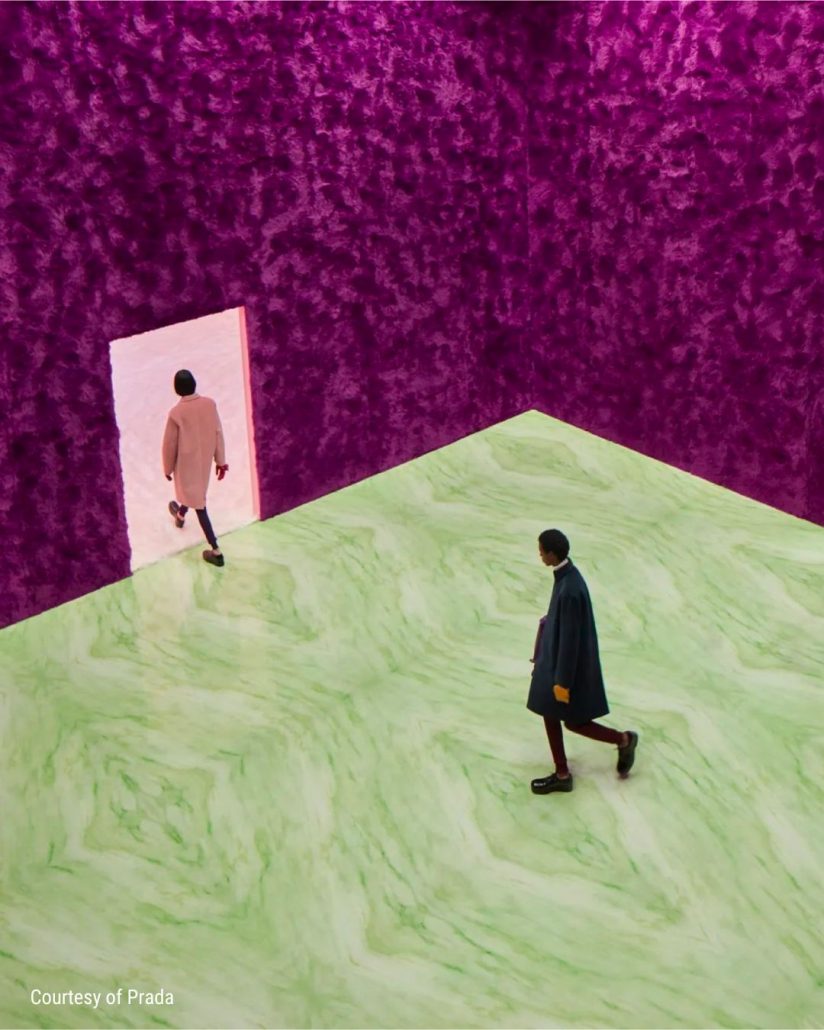
Fashion trend forecasting
Trend forecasting is the act of predicting fashion trends
including colors, fabrics, silhouettes, patterns, styles,
and more for cothing collections in upcoming seasons.
THE EVOLUTION OF TREND
FORECASTING
When fashion shows evolved into true spectacles for fashion industry insiders and photographers beginning in the 1960s, the rules of the market were already being set. Buyers and forecasters attended shows where they would note the trends which designers had chosen for the upcoming fashion year, and these experts would create trend reports for the mass market. Larger retailers, notably department stores, would base their collections on this information from the most exclusive runway shows in Paris, London, Milan, and New York, and magazines then diffused the must-have trends to the general public.
Today, trend forecasting moves much more quickly.
The omnipresence of technology, from social media to live-streamed collections, has democratized the fashion industry, effectively changing the way fashion moves throughout society. Trendsetters are no longer only designers, but also young influencers on Instagram, fashion bloggers with a loyal audience, and celebrities on the street.
Trend forecasting is a much bigger job than it once was: forecasters must be creative in their approach and quick in their reactivity.
The most simple definition of trend forecasting is as such: Depending on one’s methods, it is the act of predicting fashion trends including colors, fabrics, silhouettes, patterns, styles, and more for clothing collections in upcoming seasons.

Today, trend forecasting moves much more quickly.
The omnipresence of technology, from social media to live-streamed collections, has democratized the fashion industry, effectively changing the way fashion moves throughout society. Trendsetters are no longer only designers, but also young influencers on Instagram, fashion bloggers with a loyal audience, and celebrities on the street.
Trend forecasting is a much bigger job than it once was: forecasters must be creative in their approach and quick in their reactivity.
The most simple definition of trend forecasting is as such: Depending on one’s methods, it is the act of predicting fashion trends including colors, fabrics, silhouettes, patterns, styles, and more for clothing collections in upcoming seasons.
WHY TREND FORECASTING?
anticipating time-to-market speed is important
Fashion’s past of uniquely drawing trends from Fashion Weeks, past sales analysis, and trade shows is just that: the past. So many brands churn out new pieces and collections at a rate the fashion industry has never before seen, and consumers switch preferences just as quickly.
While runway collections and store feedback remain an important creative source for the fashion industry, consumption rates and information distribution have accelerated beyond the pace of Fashion Weeks. New products, new styles, and new trends crop up every week on social media, and designers draw inspiration from all sorts of outlets. Platforms like Instagram and TikTok are merciless in their turnover time, especially with the advent of fast fashion, with some trends lasting 2 weeks before going out of style — remember those tiny sunglasses during the summer of 2017?
identifying key trends in times of change
Usually, collection schedules are thought out up to one or two years in advance, and trend forecasting is the only reliable way to avoid missing the mark on stock, assortment, and consumer desires. The downside of planning collections so far in advance, however, is that sometimes there are turns of events which impact fashion.
For example, Heuritech placed the predicted and current market trends in fashion within the context of Covid, in order to anticipate the trends for summer and fall 2020. It proved useful to Heuritech’s methodology that consumers spent more time on social channels during confinement, because this supplied the Heuritech platform with more images to better predict coming trends. Many brands in turn received more data than they previously expected thanks to this social media analysis: it goes to show that there is always a solution.
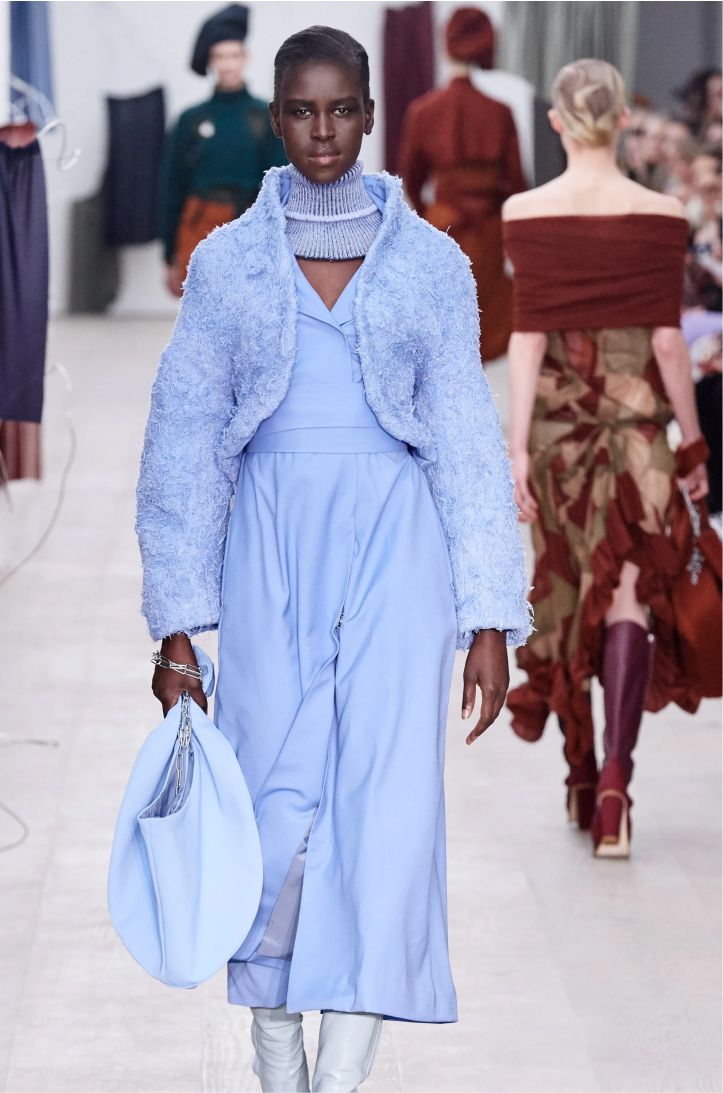
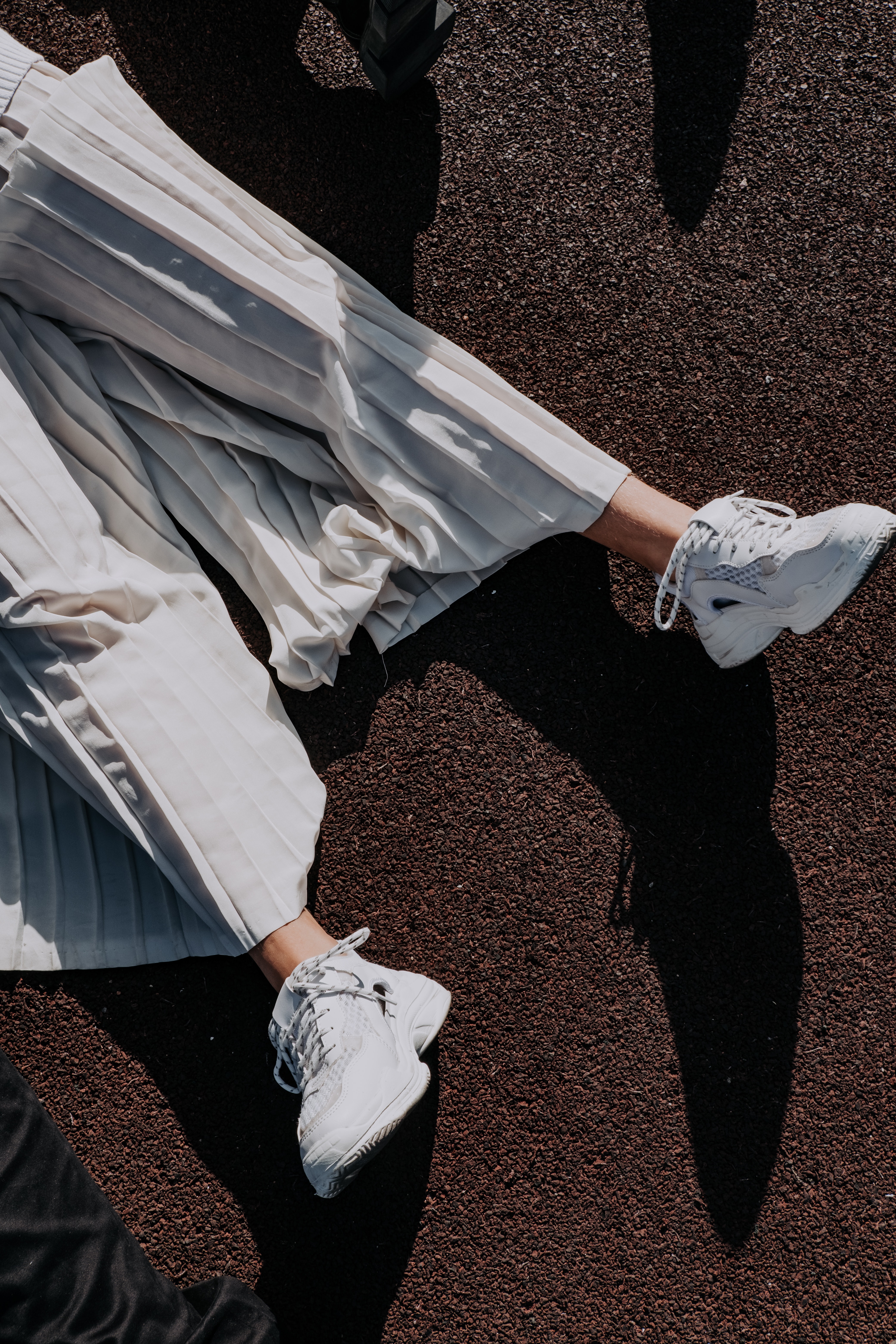
when forecasting is
applied to the market
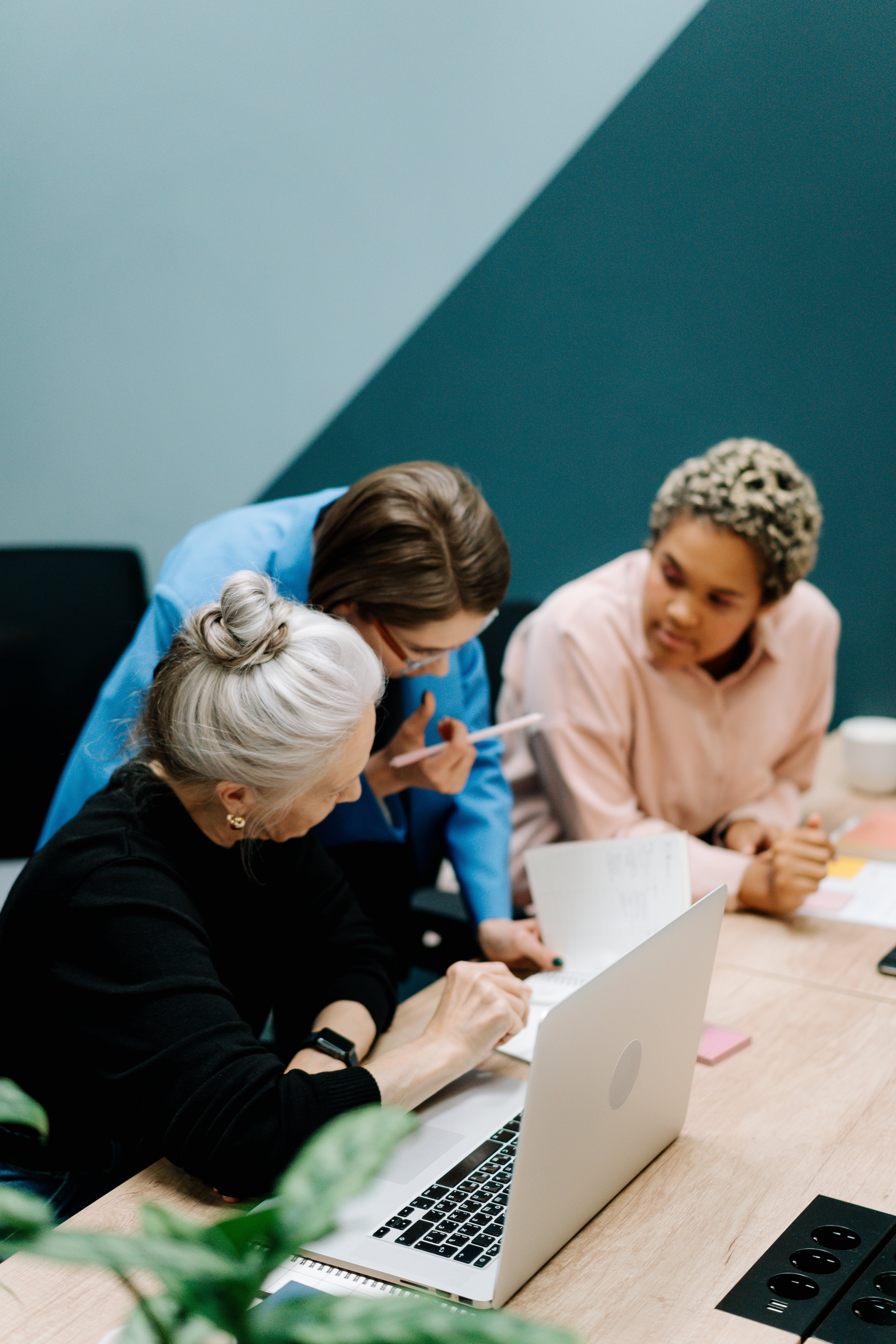
forecasting a distinct style within a market
There aren’t many styles more distinct in recent fashion than the chunky dad sneaker which dominated the market beginning in 2018. The chunky sneaker was a hit trend on the high street, and since then, it has trickled down to the mainstream market, as well. At the time, a luxury fashion brand with an edgy and trendy audience, according to Heuritech’s criteria, needed a projection of the sneaker market to plan their next collection. Certain styles, colors, and shapes were, of course, the main points of interest in terms of consumer desirability.

The designers and merchandisers in particular required data from the market to back their previsions for particular sneaker trends, using Heuritech’s data, the brand received the following information:
- An overview of the sneaker market, including competitors’ products
- The different sneaker styles and their quantified popularity
- Which consumer audiences prefer which sneaker styles
Heuritech is providing a platform allowing brands of all levels to have trend forecasting technology, giving them a vision of their present and future market and customers.


fashion weeks and their role in trend prediction
In normal times, Fashion Weeks are another goldmine of opportunity for foreseen trends, sources flowing both from the runway and the streets. Yet, luxury brands have trouble knowing to what degree a product or look will succeed in the wake of Fashion Week, especially now that these events have become increasingly democratized.
Social media is the first place that attendees, industry insiders, and brand followers post their thoughts on the given collection. Never before have brands been given direct, real-time access to their customers’ thoughts and feelings on particular products and collections. Image recognition technology and hashtag detection provides information about the predictability and desirability of products to fashion and sportswear brands and buyers equally, which down the line improves marketing, merchandising, and communication projection.
the relationship between fashion trends and social media
The difference today is as simple as social media. It makes sense for the consumer to have more say in what trends live or die nowadays. Consumer consumption rates are higher than ever, and as perhaps both a cause and an effect, trends phase in and out rapidly. Who is wearing what on social media, and which celebrity wore this or that on the street, are just as powerful among consumers as fashion shows themselves. When Katie Holmes wore an off-the-shoulder cardigan while hailing a taxi in New York, the internet went wild, and several months later, one of summer 2020’s top trends became the “sexy cardigan.”
The way brands communicate on social media plays into their success among consumers, as well. Aerie’s #AerieReal campaign encourages women everywhere to be more body positive, while Glossier’s presence on Instagram is nothing short of being a virtual best friend. Social media presence directly impacts trends because it’s such a direct line to the consumer. As such, part of what trend forecasting takes into account are these interactions between brands and their customers to better predict the direction of market trends.
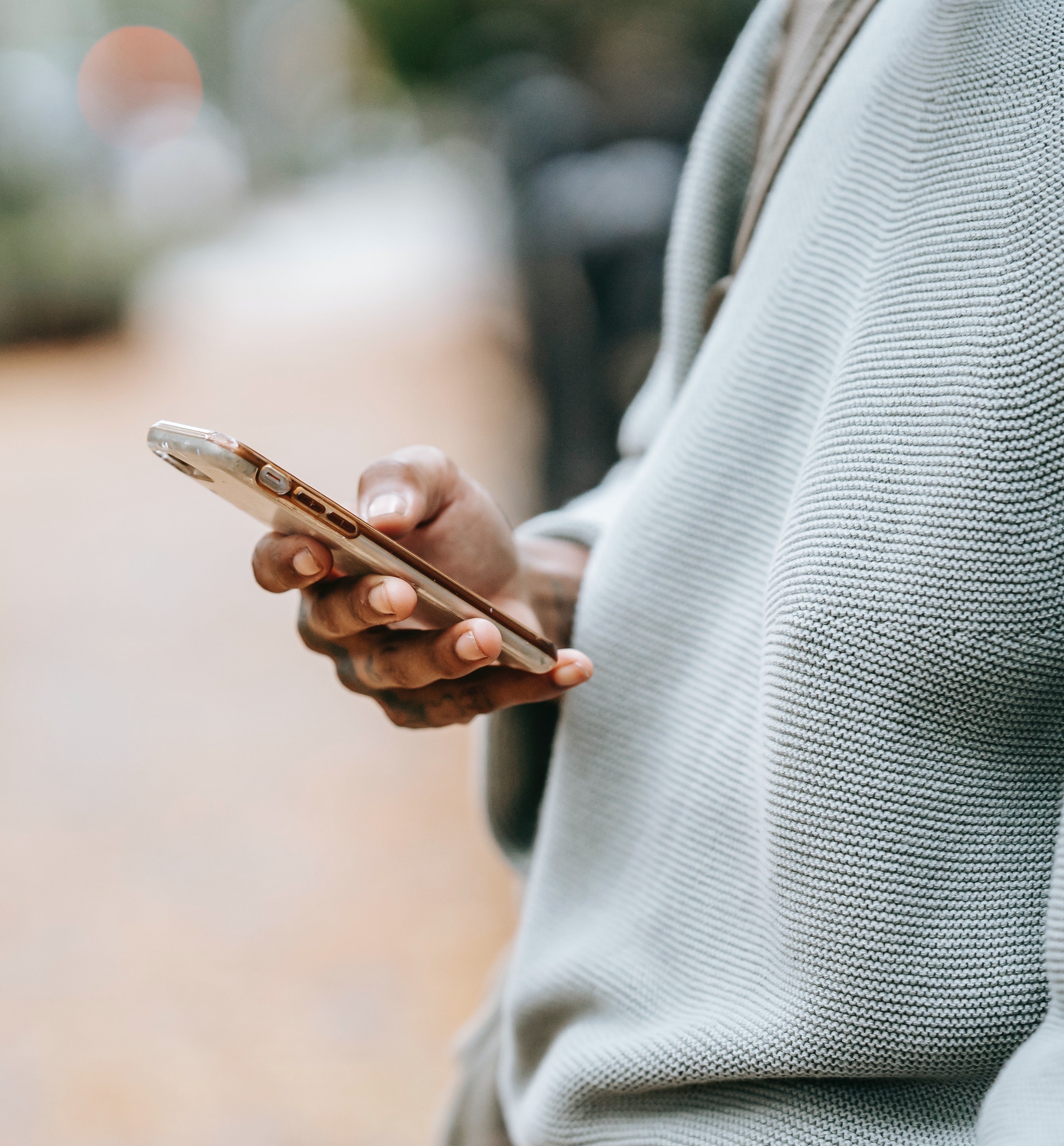
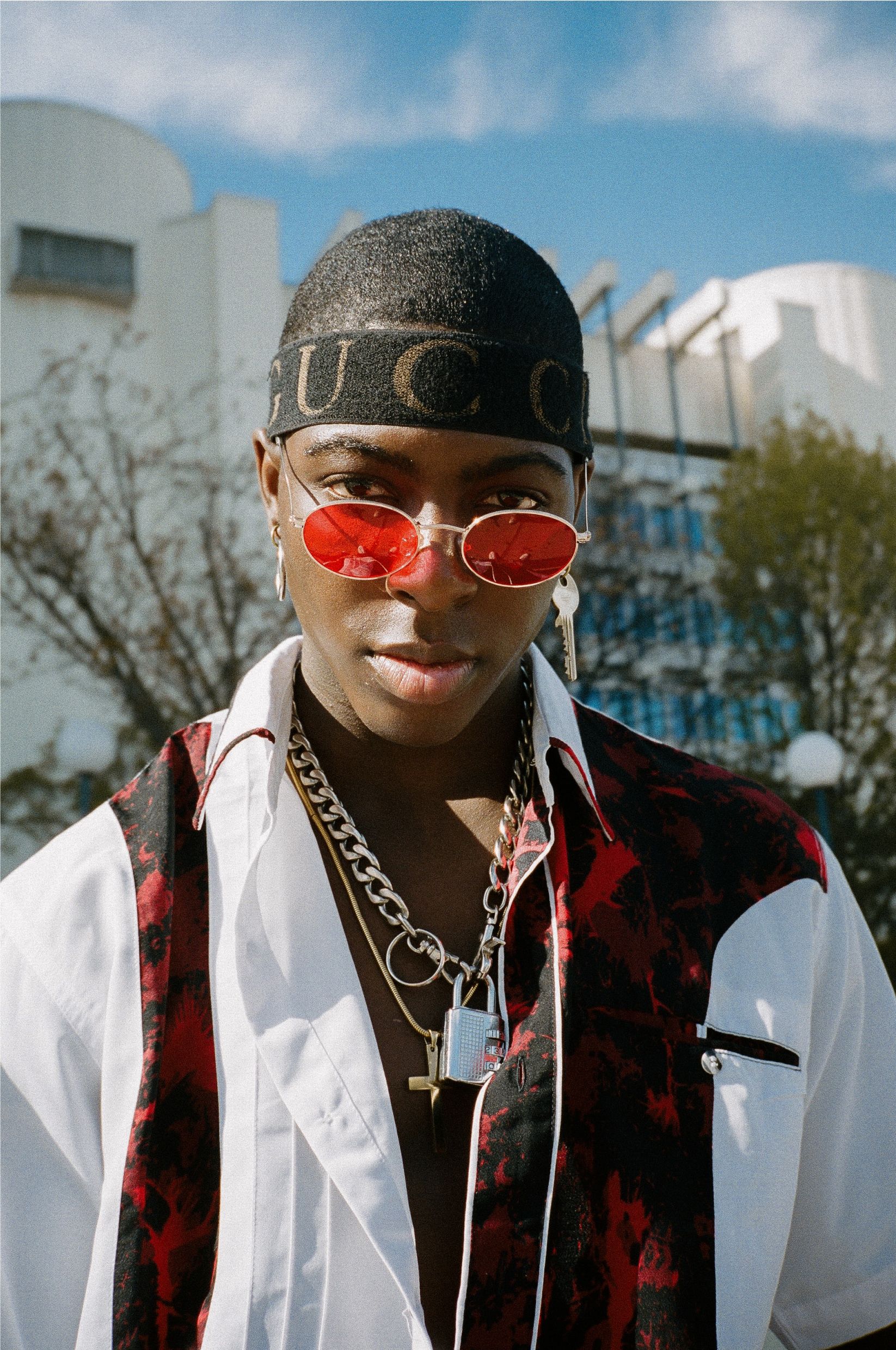
Additionally, more than 100 million images and 400 million stories are shared each day on Instagram alone. Influencers and non-influencers alike provide free and sponsored visibility to brands when they post their newest bag or shoe, for example, and social media users pay attention to this behavior. Brands themselves now advertise and create followings on Instagram: for example, Chanel was once named as the most influential luxury brand on social media, with more followers on Instagram than any other luxury brand. Digitally native brands are rising in numbers, as well, creating universes exclusively on social channels and leaving behind traditional brick-and-mortar stores.
Yet Instagram isn’t the only social media platform inspiring change in the fashion industry: Weibo, Pinterest, TikTok, and YouTube are playing bigger and bigger roles, too, as millennials and Gen Z-ers have become both influencers and influencees. The industry as a whole has shifted from an exclusive to an inclusive form of fashion: consumers now express their opinions daily by combining fashion with social media.
With so many inputs of information thanks to social channels, it can be complicated for brands to always know what’s relevant, what is not, and what will last and what will not. Social media has had a long list of effects on the market and consumer behavior, including:
• Amplifying and accelerating the spread of a viral buzz
• Increasing the time-to-market pressure
• Making it harder for brands to predict the lifecycle of a product
Brands need to be able to anticipate trends – but only if they have the right tools to make sense of so much data. This is the reason Heuritech harnesses the scale of data, the predictive power of artificial intelligence, and the expertise of PhDs in machine learning to deliver the best technology to the fashion industry to anticipate market demand and produce better. So now the question is: how exactly does this technology work?
Forecasting trends with heuritech
Heuritech was founded in 2013 by PhDs in Machine Learning who believed that images could tell powerful stories if one knew how to read them. They developed a proprietary image recognition technology to analyze fashion images on social media. And in today’s world, where millions of pictures are shared each day on Instagram, Weibo, and other platforms, this technology turned out to be a powerful tool to analyze and anticipate in real-time what trends are happening out there.
who can heuritech impact?
Heuritech helps fashion designers, planners, merchandisers, buyers, communication, digital and insights teams improve every step of the product life cycle, from predicting trend behaviors, to improving demand planning accuracy, to maximizing visual merchandising. Heuritech provides brands the opportunity to:
- Always be ahead of the next big trends
- Find inspiration in influencer and consumer images on Heuritech’s trend mood boards
- Improve demand planning with predictive analytics on trend lifecycles
- Target the right buyer persona for each trend and market
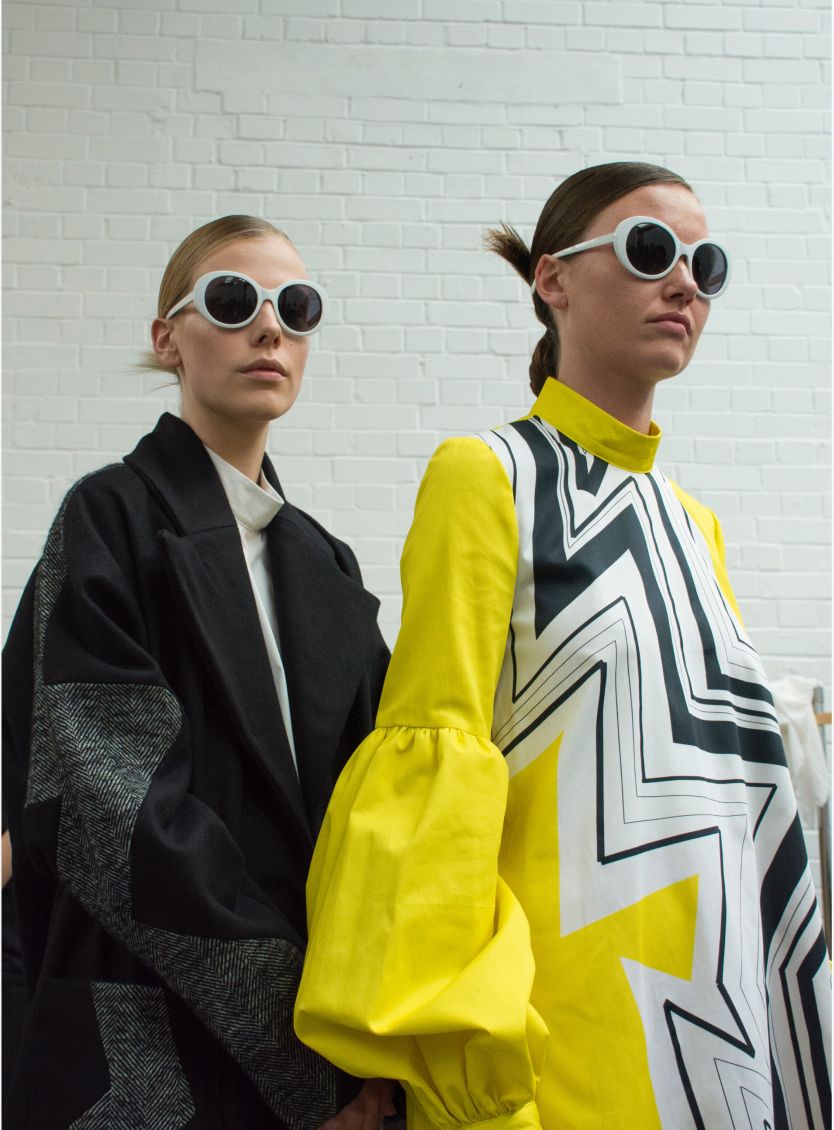
what sets heuritech apart?
Other companies have caught on, but often their solutions fall short. Current solutions often analyze only text and hashtags in social media posts, leaving out a vital aspect of social media: shared images in which users showcase their newest looks, often with no textual mention describing what they are wearing. Otherwise, they often analyze images from catalogs published online, typically on the brands’ website or major fashion news sources. These images do not reflect customer reception, perception, or prediction of the products, and this is the first step of forecasting trends on social media.
It should be noted that Heuritech is not the only company to use Machine Learning, image recognition, and forecast algorithms in the fashion industry in particular. It is, however, the only company that applies artificial intelligence to do so comprehensively.
are foreign markets important?
The globalization of the fashion industry, from supply chains to trends themselves, has transformed the way traditional brands approach everything ranging from collection planning to marketing. Zara, for example, operates over 2,000 stores worldwide, with about 1,300 in Europe and 600 in Asia. Customer desires are addressed with market segmentation and product differentiation depending on which trends are predicted to be most desirable for the given geography.
Trend forecasting can be a major advantage for all fashion brands, not only for global giants like Zara, because some approaches go so far as to analyze different geographies when analyzing trends. Brands who are or aim to be international must take into account cultural and geographical differences.
How does heuritech’s trend forecasting technology work?
Heuritech combines a great volume of data with historical analysis, geographical breakdown, and client segmentation to predict and quantify each trend behavior up to 12 months ahead. Here are the steps.

Step 1
Define representative panels
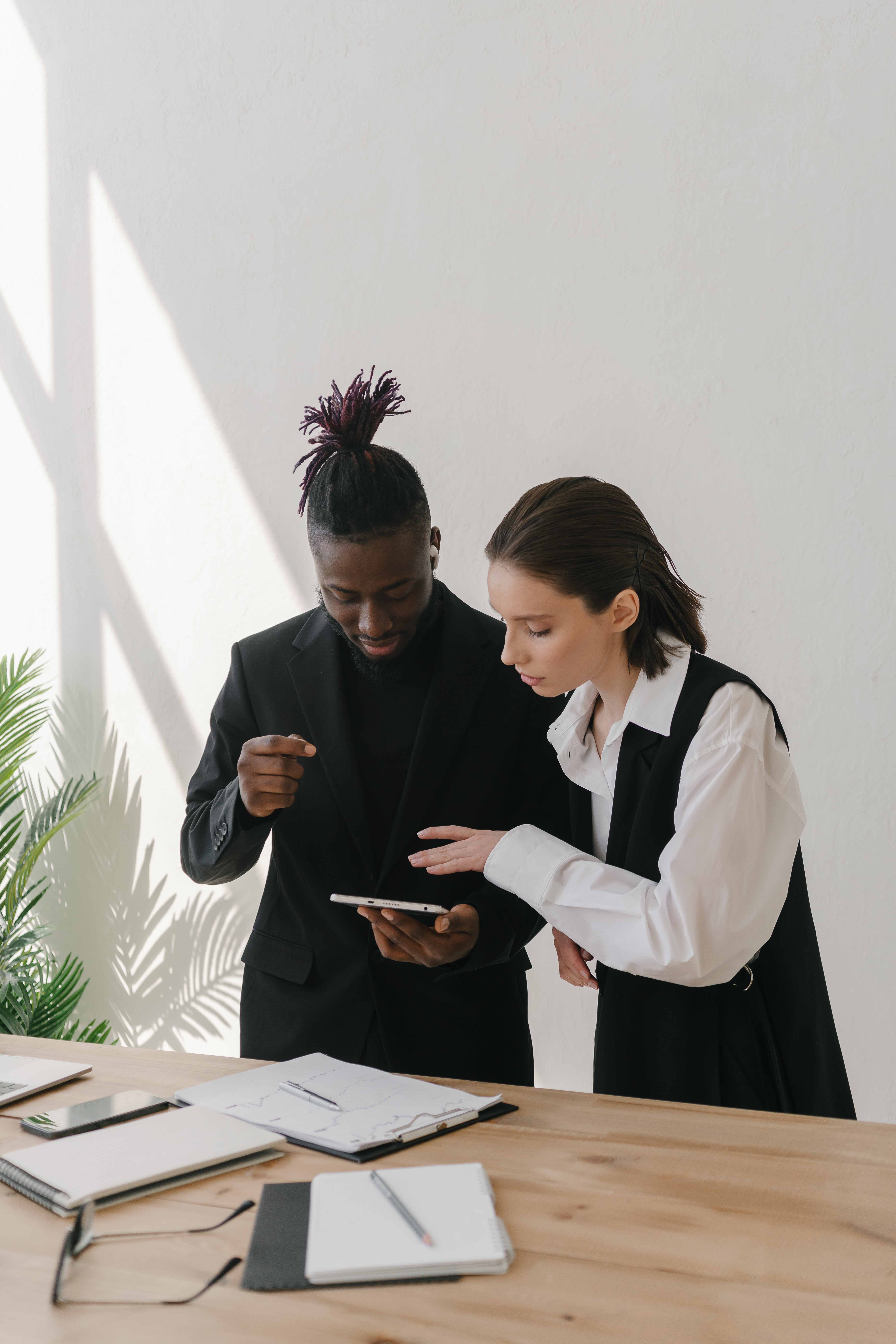
Step 2
Applying our computer vision technology to millions of social media images stemming from these panels
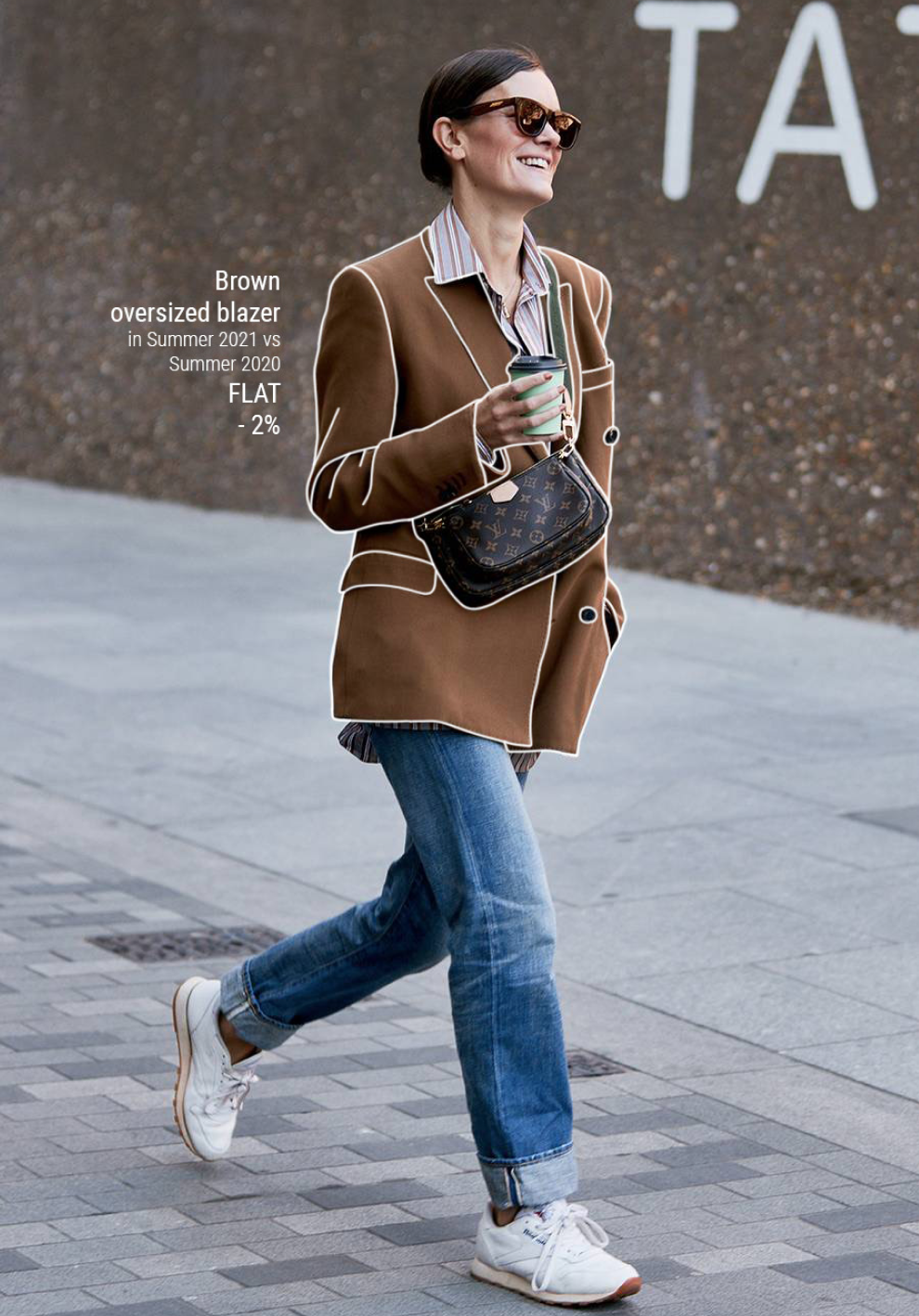
Step 3
Use our machine learning forecasting algorithms to predict trends up to one year in advance
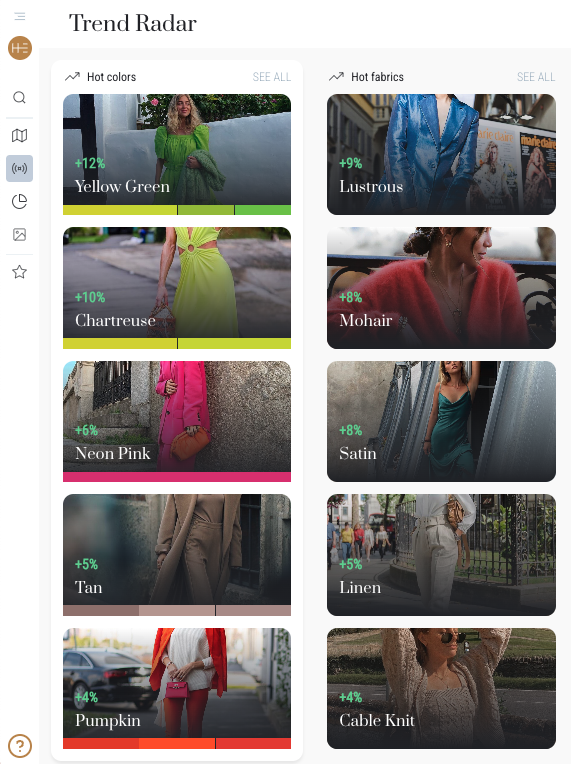
Step 4
Insert Heuritech’s data into our Market Insights platform
1. DEFINING AUDIENCE PANELS ON SOCIAL MEDIA
Successful brands know their audience. While this is obvious, it isn’t always easy to find accurate data on the matter, which is why Heuritech’s trend forecasting methodology begins with the consumer. To do so, Heuritech defines three different audience panels using the following criteria:
- Accounts that show an interest in fashion
- Accounts that post regularly
- Accounts that are representative of different style segments of the fashion market
First, Heuritech automatically collects a random sample from social media to analyze. Random sampling prevents selection bias and allows for accurate representation of social media users and what is happening in the market. This process, combined with the above criteria, provides the following audience panels:
EDGY
People with bold and distinctive style. They represent the smallest segment, their content is very niche, and they tend to post often. They cover all the main fields of the fashion industry, whether they are professionals (stylists, journalists, influencers) or industry authorities (luxury, sports, fast fashion, high street, beauty).
TRENDY
Fashionable people looking for the latest styles and who tend to help spread trends across the market in part by posting often. They are more substantial in number than edgy accounts but remain much more qualified and rare than mainstream accounts.
MAINSTREAM
People looking for safe clothing choices and who will follow a trend rather than shape it. They represent the largest panel, and their content is more casual.
These panels are very helpful for brands when creating collections and developing their marketing strategies. Additionally, Heuritech has an extensive geographical coverage that includes Europe, France, the United Kingdom, the US, the Middle East, China, South Korea, Japan, Brazil, Taiwan, Thailand, Singapore, Malaysia, Philippines and Indonesia. By combining the type of consumer with the nuances associated with their region, trend forecasting flows much more smoothly.
2. applying heuritech’s image recognition technology to shared images on social media
Once the audience panels have been determined, the process then moves forward to analyzing the images themselves. In any given photo, Heuritech’s proprietary image recognition technology can detect and categorize more than 2,000 components, including:
These components are then combined to allow Heuritech to precisely identify trends for each panel. This technology understands that it is seeing a photo of a striped t-shirt, for instance, because it recognizes the product has a crew neck, short sleeves, stripes of different colors, and even the type of fabric. And because this technology analyzes millions of images every day, the volume of striped t-shirts can be assessed, as well.
By looking at the volume, or the popularity once translated, of any given trend, Heuritech can quantify the trend’s past growth and evolution in order to predict its future behavior, too. This is essential information for merchandisers and designers to understand how a particular product is being received in real-time, by what kind of consumer, and in which markets around the world.
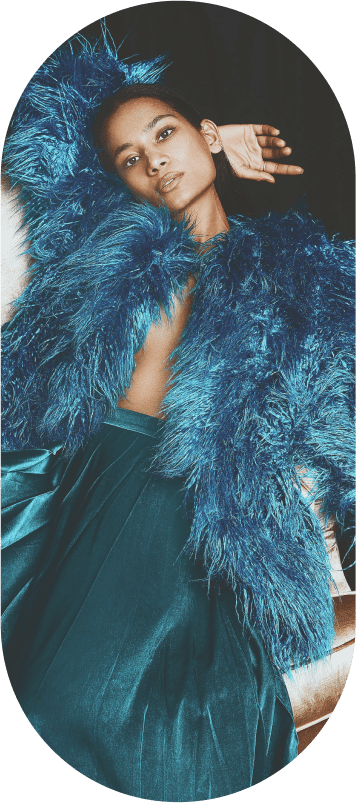
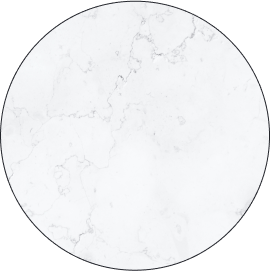

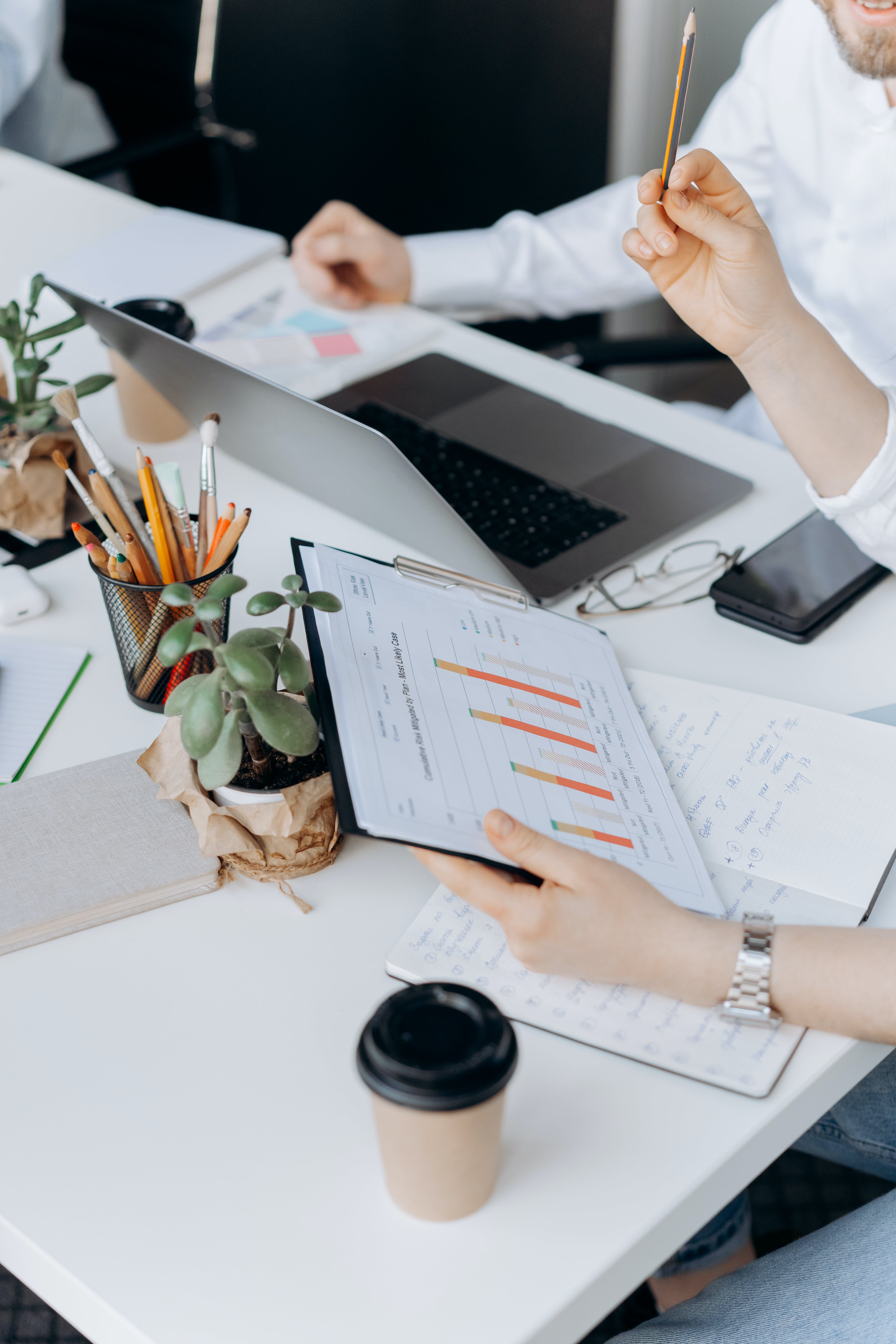
3. engaging heuritech’s machine learning algorithms
To be able to forecast trend evolutions, Heuritech developed an in-house deep-learning approach that picks up on what are dubbed early signals. These are slight changes in activity among edgy influencers who are often those who breathe life into trends. Using these early signals, these algorithms detect the onset of new emerging trends before they reach the mainstream and realize their full market potential.
Heuritech’s master algorithm is regularly trained to combine the different forecasts obtained for each fashion item:
With this information, the algorithm is able to select the best combination of forecast methods.
These trend forecast methods, paired with this master algorithm, tracks past and current data about a fashion trend, which allows Heuritech to predict how a trend will behave up to one year in advance. To ensure the most accurate predictions, these forecasts are constantly adjusted in real-time. Brands can thus know the precise growth, differences in trend behaviors between seasons, and advice on assortment for collection planning and buying.
4. Entering the data into Heuritech’s Market Insights platform
The final step of the process gives fashion brands a comprehensive 360° scope of market trends and product performance to facilitate trend prevision. The data collected through image recognition technology, a master algorithm, and forecasting methods is entered into Heuritech’s platform: Market Insights. Market Insights is a dashboard which displays all of the data needed to back fashion-related intuitions and make decisions on product choice, marketing strategies, merchandising, stock, and more. Heuritech’s exclusive data is integrated every day into Market Insights, a dashboard used by brands to back their intuitions and make data-driven decisions on products, marketing, merchandising, stock, and more.
Using advanced artificial intelligence (AI) to translate real-world images shared on social media into meaningful insights, Heuritech empowers brands to forecast demand and trends more accurately, produce more sustainably, and achieve unprecedented competitive advantage.

